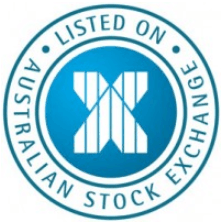
Stan Shamu for Chris Weston, Chief Market Strategist at IG Markets
It’s a mixed session in Asia with focus on Japan and Australia after some key economic readings. The AUD spiked on the back of Australia’s Q1 private capital expenditure numbers which are a key input for GDP data. While the headline was a bit of a shocker with overall spending down 4.2% compared to the -1.5% expected, dissecting the figures revealed some positive signs. For starters, the previous month was revised to -4.5%, a touch better than the initial -5.2% reading. The estimate of investment spending for FY14 was a touch below expectations at $162.9 billion. However, the FY15 investment spending forecast of $137.1 billion was well ahead of what analysts were expecting. While the numbers aren’t fantastic and still show a contraction, they are a glimmer of hope for an economy that has been struggling for a while.
Additionally, non-mining investment also seems to be picking up and is expected to rise around 7% in FY15. From an RBA perspective, this is exactly what it would want to see as mining investment peaks with growth concerns weighing on commodities. A rotation to a more domestic-driven economy is what the recent rate cuts were aiming to achieve and as a result, the market cheered the data today. Just looking ahead to next week’s GDP reading, spending dropped off in the March quarter and this poses some downside risk to the GDP reading.
US GDP in focus
Regardless, AUD/USD is in good stride on the back of the data and is now in the 0.927 region where it was sidelined for most of the week. With private sector credit – due out tomorrow – being the only remaining piece of economic data on the calendar this week, AUD volatility is likely to remain limited which puts focus back on the USD side of the equation. There will be plenty to look out for with US GDP, unemployment claims and pending home sales due out. US GDP is expected to be revised to a negative print, with most analysts feeling this is consistent with a handover into Q2, which is then expected to show a bounce-back. Should the Q1 figure surprise to the upside, then perhaps we might finally see a bounce in the greenback which has remained subdued. A stronger greenback could see AUD/USD struggle at higher levels. AUD supply is likely to increase as the pair edges closer to that 0.93 mark.
Nikkei flat today
After leading the region for most of the week, Japan’s Nikkei is experiencing some choppy trading today, with investors digesting the poor April retail sales reading. USD/JPY has remained capped below 102 despite the disappointing retail sales reading. Retail sales dropped a whopping 13.7% from the previous month and 4.4% on year. While it’s no surprise that this figure disappointed given the consumption tax hike kicked in and we had seen significant front loading in March, the magnitude would have caught some off guard. Generally poor Japanese data leads to a weaker yen as investors bet on stimulus. This was not the case this time round though, as investors don’t feel this disappointing reading will necessarily lead to more stimulus; particularly after the commentary we’ve heard from Japanese officials this week. Tomorrow we also have a raft of releases out of Japan to look out for including CPI, unemployment, industrial production, private sector credit and housing starts. Perhaps this has warranted some caution for some investors.
Europe in for a flat start
Looking ahead to European trade, we are expecting a relatively flat start, with a quiet session in store. The European calendar is relatively light today with bank holidays for France and Germany. Any comments by officials will continue to be watched closely as investors anticipate action from next week’s meeting. ECB Executive Board member Mersch was on the wires reinforcing the notion that measures will be announced next week. Many analysts now feel we’ll hear measures that contain a combination of measures possibly including an LTRO and rate cuts. This is likely to keep the euro offered in the near term.